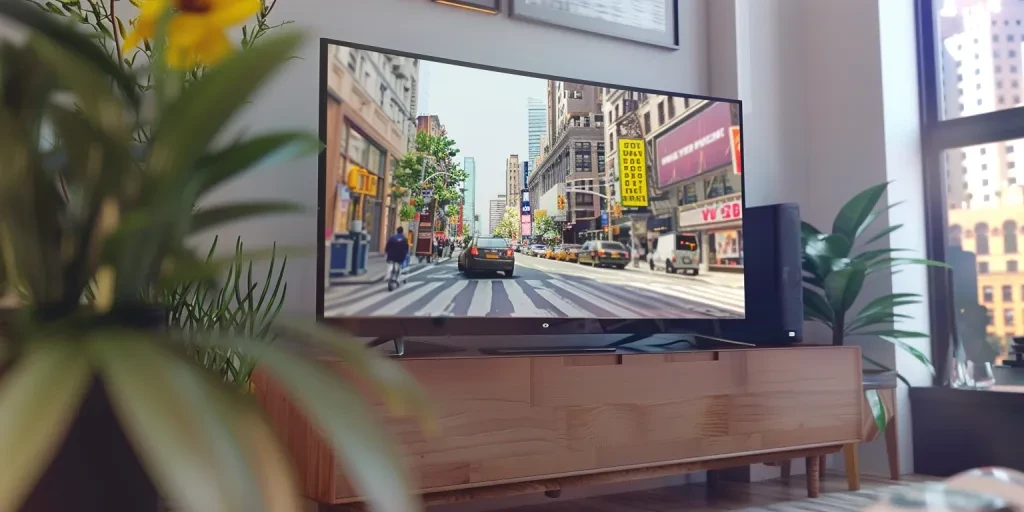In 2025, the 4K TV market is expected to reach new heights, driven by advancements in display technology and the increasing popularity of UHD content. This article provides an in-depth analysis of key factors to consider when selecting 4K TVs, offering valuable assistance to professional buyers in making informed decisions.
Table of Contents:
– Market Overview of 4K TVs
– Detailed Analysis of the 4K TV Market
– Key Factors to Consider When Selecting a 4K TV
– Understanding the Different Types of 4K TVs
– Performance and Functionality of 4K TVs
– Design and Aesthetics of 4K TVs
– Price Range and Budget Considerations
– Evaluating the Latest Technology Features in 4K TVs
– Assessing Build Quality and Durability of 4K TVs
– Ensuring Compatibility with Other Devices and Systems
– Conclusion
Market Overview of 4K TVs

The global 4K TV market has seen significant growth in recent years due to rising demand for high-resolution entertainment and technological advancements. In 2024, the market size reached $285.28 billion, with a compound annual growth rate (CAGR) of 24.2% from 2023. The market is expected to continue growing, reaching $685.86 billion by 2028, with a CAGR of 24.5%. Factors such as the popularity of Ultra High Definition (UHD) content, the expansion of streaming services, and the increased adoption of smart features in televisions are driving this growth.
North America was the largest region in the 4K TV market in 2023, due to high demand for advanced home entertainment systems and the availability of 4K content. The Asia-Pacific region is also experiencing significant growth, with countries like China and India adopting 4K TVs due to rising disposable incomes and more digital content. Key players in the market include Samsung, LG Electronics, Sony, and TCL, who are innovating to capture a larger market share.
Market dynamics are influenced by the availability of 4K content, advancements in display quality, and the trend of smart home integration. The rise of e-commerce platforms has also boosted the market, as online stores offer detailed product information and discounts, making 4K TVs more accessible.
Detailed Analysis of the 4K TV Market
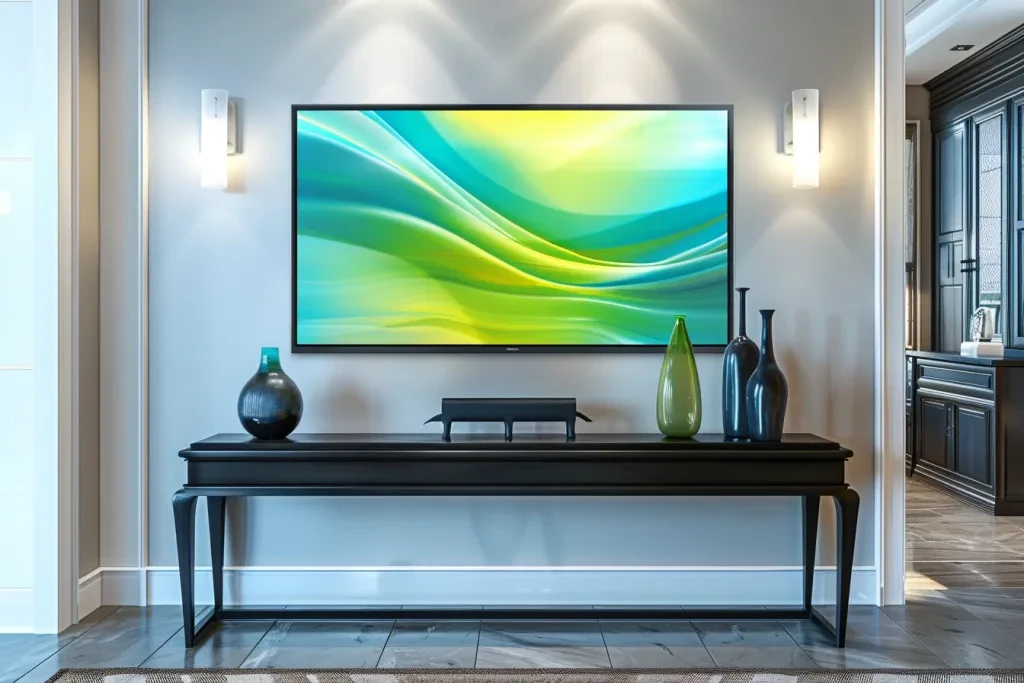
The 4K TV market features a variety of screen sizes and technologies to meet different consumer needs. Screen sizes are generally categorized into below 52 inches, 52-65 inches, and above 65 inches. Smaller screens are suitable for compact spaces, while larger screens are preferred for immersive experiences in living rooms and commercial settings.
Technological advancements have notably improved 4K TVs. OLED and QLED technologies provide superior picture quality with deeper blacks, brighter colors, and better contrast ratios. High Dynamic Range (HDR) technology enhances the viewing experience with a broader range of luminance levels, creating more lifelike images. Smart features like voice assistants and AI-driven recommendations have become standard, fulfilling the demand for connected and interactive entertainment systems.
Consumer behavior now favors high-quality displays and smart features. This trend is reflected in the increasing sales of UHD TVs, which made up 75% of the German TV market in Q1 2021. Rising disposable incomes and the popularity of streaming services are driving consumers to upgrade to 4K models. Seasonal demand patterns, such as during major sporting events and holidays, also impact sales.
Distribution channels for 4K TVs include both offline and online stores. Offline stores offer a hands-on experience, while online platforms provide convenience and competitive pricing. The growth of e-commerce has significantly increased online sales, with online stores accounting for 15.4% of all retail sales in the United States in Q2 2023.
Recent innovations in the 4K TV market include mini-LED technology, which improves brightness and contrast ratios. For example, TCL’s mini LED QLED 4K Android 11 TV C825 uses smaller LEDs to enhance display capabilities. Leading companies like Samsung and LG are also focusing on energy efficiency and eco-friendly models to attract environmentally conscious consumers.
Key Factors to Consider When Selecting a 4K TV
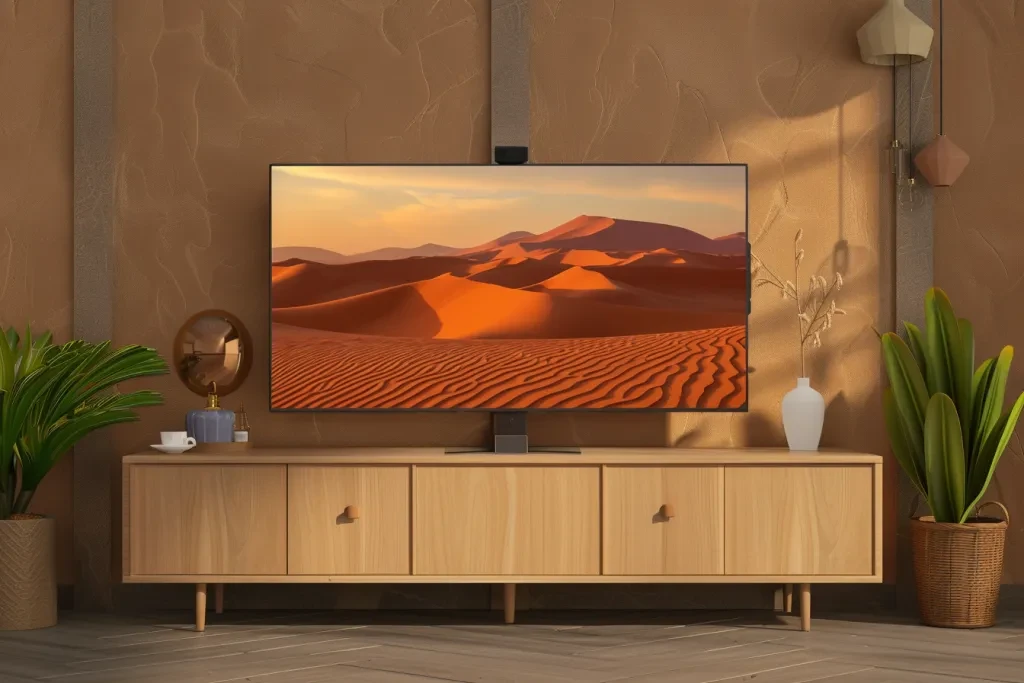
When selecting a 4K TV, several critical factors should be considered to ensure the best viewing experience and value for money. These factors include the TV’s display technology, resolution, HDR support, smart features, and overall build quality. Below, we delve into these considerations in detail.
Display Technology
Display technology is crucial for any 4K TV as it determines the quality of the visuals. The most common types are LED, OLED, and QLED.
LED TVs use light-emitting diodes to illuminate the screen, offering good brightness and color accuracy at a relatively affordable price. However, they may have limited contrast ratios compared to other technologies.
OLED TVs use organic light-emitting diodes that can turn individual pixels on and off. This results in perfect blacks and infinite contrast ratios, providing an unparalleled viewing experience. OLED TVs are ideal for dark room viewing and offer excellent color accuracy and viewing angles.
QLED TVs, developed by Samsung, use quantum dot technology to enhance brightness and color accuracy. They offer better performance than traditional LED TVs and are suitable for bright room viewing. QLED TVs also tend to have a longer lifespan compared to OLED TVs.
Resolution and HDR Support
Resolution and HDR (High Dynamic Range) support are key factors in determining the picture quality of a 4K TV.
A 4K resolution TV has 3840 x 2160 pixels, providing four times the detail of Full HD. This results in sharper and more detailed images, making it ideal for large screen sizes where pixel density is crucial.
HDR support enhances the contrast and color range of the TV, making the picture more vibrant and lifelike. Look for TVs that support HDR10, HDR10+, and Dolby Vision for the best HDR performance. HDR10 is the most common standard, while Dolby Vision offers dynamic metadata for scene-by-scene optimization.
Smart Features
Smart features are essential for modern TVs, providing access to streaming services, apps, and internet browsing.
Most 4K TVs come with built-in smart platforms like Android TV, webOS, or Roku TV. These platforms offer a wide range of apps, including Netflix, Amazon Prime Video, and Hulu.
Voice control compatibility with virtual assistants like Amazon Alexa and Google Assistant can enhance the user experience by allowing hands-free operation.
Build Quality and Design
The build quality and design of a 4K TV are important for both aesthetics and durability.
Look for TVs with a slim bezel design and a sturdy stand or wall-mounting options. Premium materials like metal and glass can enhance the overall look and feel of the TV.
Consider the TV’s weight and dimensions, especially if you plan to wall-mount it. Ensure the TV’s ports and connectors are easily accessible.
Price and Value for Money
Price is a significant factor when selecting a 4K TV. It’s essential to balance the features and performance with the cost to get the best value for money.
High-end models like OLED and QLED TVs tend to be more expensive but offer superior picture quality and features. Mid-range LED TVs provide good performance at a more affordable price.
Look for deals and discounts, especially during sales events, to get the best price on a 4K TV.
Understanding the Different Types of 4K TVs

The market offers various types of 4K TVs, each with its unique features and advantages. Understanding these types can help you make an informed decision when purchasing a 4K TV.
LED 4K TVs
LED 4K TVs are the most common and affordable type of 4K TVs available. They use light-emitting diodes to illuminate the screen, providing good brightness and color accuracy.
One of the main advantages of LED TVs is their energy efficiency. They consume less power compared to other display technologies, making them an eco-friendly option.
However, LED TVs may suffer from limited contrast ratios and viewing angles compared to OLED and QLED TVs. They are best suited for bright room viewing environments.
OLED 4K TVs
OLED 4K TVs use organic light-emitting diodes to produce light and color. Each pixel can be individually controlled, resulting in perfect blacks and infinite contrast ratios.
The main advantage of OLED TVs is their superior picture quality. They offer excellent color accuracy, wide viewing angles, and fast response times, making them ideal for watching movies and playing games.
However, OLED TVs tend to be more expensive than LED and QLED TVs. They may also suffer from image retention or burn-in if static images are displayed for extended periods.
QLED 4K TVs
QLED 4K TVs use quantum dot technology to enhance brightness and color accuracy. Developed by Samsung, QLED TVs offer better performance than traditional LED TVs.
The main advantage of QLED TVs is their ability to produce bright and vibrant images, making them suitable for bright room viewing. They also have a longer lifespan compared to OLED TVs.
However, QLED TVs may not achieve the same level of perfect blacks and infinite contrast ratios as OLED TVs. They are a good option for those who prioritize brightness and color accuracy.
Performance and Functionality of 4K TVs
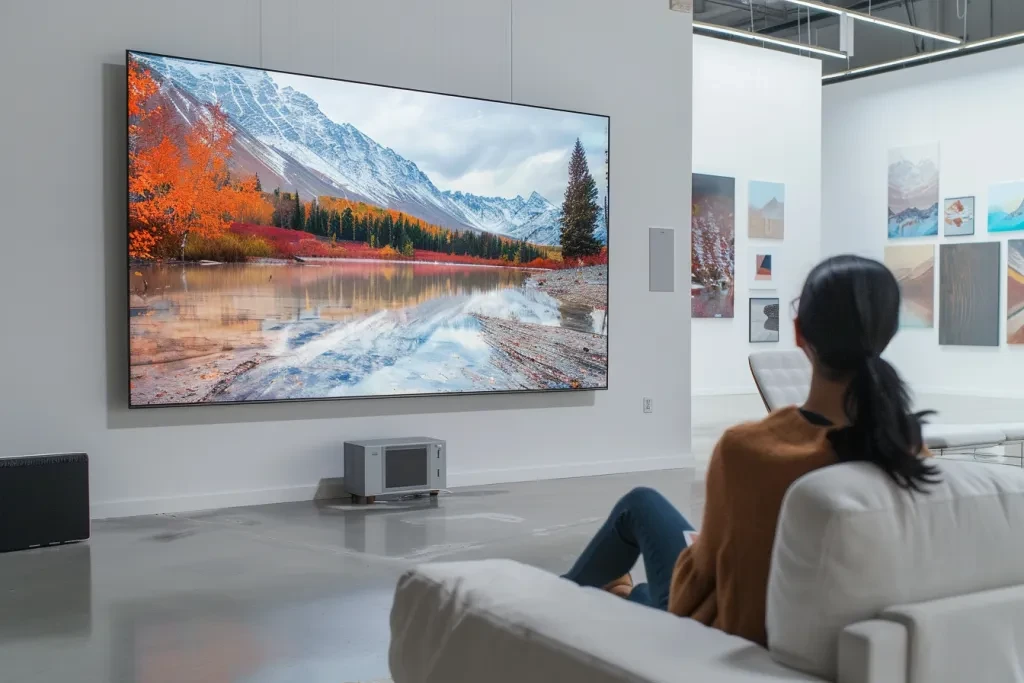
The performance and functionality of a 4K TV are critical factors that determine the overall viewing experience. Key aspects to consider include refresh rate, input lag, and smart features.
Refresh Rate
The refresh rate of a 4K TV refers to the number of times the screen refreshes per second, measured in Hertz (Hz). Higher refresh rates result in smoother motion and reduced motion blur.
Most 4K TVs have a refresh rate of 60Hz, which is suitable for general viewing. However, for gaming and fast-paced action scenes, a higher refresh rate of 120Hz or more is recommended.
Input Lag
Input lag is the delay between a user’s input (e.g., pressing a button on a remote or game controller) and the TV’s response. Lower input lag is crucial for gaming and interactive applications.
Look for 4K TVs with a dedicated game mode that reduces input lag. Input lag below 20 milliseconds is ideal for a smooth gaming experience.
Smart Features
Smart features enhance the functionality of a 4K TV by providing access to streaming services, apps, and internet browsing.
Most 4K TVs come with built-in smart platforms like Android TV, webOS, or Roku TV. These platforms offer a wide range of apps and services, including popular streaming platforms like Netflix, Amazon Prime Video, and Hulu.
Voice control compatibility with virtual assistants like Amazon Alexa and Google Assistant can further enhance the user experience by allowing hands-free operation.
Design and Aesthetics of 4K TVs

The design and aesthetics of a 4K TV play a significant role in its overall appeal and integration into your living space. Key aspects to consider include bezel design, stand options, and cable management.
Bezel Design
The bezel is the frame around the TV screen. Slim bezels provide a more immersive viewing experience by minimizing distractions and maximizing screen real estate.
Look for 4K TVs with a sleek and modern design that complements your home decor. Premium models often feature ultra-thin bezels and a minimalist aesthetic.
Stand Options
The stand or mounting options for a 4K TV are important for both stability and aesthetics. Ensure the stand is sturdy and provides adequate support for the TV’s weight.
If you prefer wall-mounting, check the TV’s VESA compatibility and ensure the necessary mounting hardware is included. Wall-mounting can save space and provide a clean, clutter-free look.
Cable Management
Cable management is essential for maintaining a tidy and organized setup. Look for 4K TVs with built-in cable management features, such as cable channels or clips, to keep cables neatly organized and out of sight.
Price Range and Budget Considerations

The price range of 4K TVs varies widely based on factors such as brand, display technology, and features. It’s important to set a budget and prioritize features that are most important to you.
Budget 4K TVs
Budget 4K TVs typically fall in the range of $300 to $600. These models offer good performance and essential features, making them suitable for general viewing and casual use.
Look for budget models from reputable brands like Samsung, LG, and Vizio, which offer good value for money. These TVs often come with built-in smart platforms and basic HDR support.
Mid-Range 4K TVs
Mid-range 4K TVs are priced between $600 and $1,200. These models offer better performance, enhanced features, and improved build quality compared to budget models.
Mid-range 4K TVs often feature advanced HDR support, higher refresh rates, and better smart platforms. They are suitable for a wide range of viewing environments and offer a good balance of performance and affordability.
Premium 4K TVs
Premium 4K TVs are priced above $1,200 and offer top-tier performance and features. These models often feature OLED or QLED display technology, advanced HDR support, and premium build quality.
Premium 4K TVs are ideal for those who prioritize picture quality and are willing to invest in the best viewing experience. They offer superior color accuracy, contrast, and overall performance.
Evaluating the Latest Technology Features in 4K TVs

The latest technology features in 4K TVs can significantly enhance the viewing experience. Key features to look for include HDR support, AI upscaling, and advanced gaming features.
HDR Support
High Dynamic Range (HDR) support enhances the contrast and color range of a 4K TV, making the picture more vibrant and lifelike. Look for TVs that support HDR10, HDR10+, and Dolby Vision for the best HDR performance.
HDR10 is the most common standard, while Dolby Vision offers dynamic metadata for scene-by-scene optimization. HDR10+ is an open standard that also provides dynamic metadata.
AI Upscaling
AI upscaling uses artificial intelligence to enhance the quality of lower-resolution content to near-4K quality. This feature is particularly useful for watching older content or streaming services that may not offer native 4K resolution.
Look for 4K TVs with AI upscaling technology, such as Samsung’s Quantum Processor or LG’s Alpha 9 processor, to ensure the best upscaling performance.
Advanced Gaming Features
If you are a gamer, look for 4K TVs with advanced gaming features such as low input lag, high refresh rates, and support for Variable Refresh Rate (VRR) and Auto Low Latency Mode (ALLM).
These features ensure a smooth and responsive gaming experience, reducing screen tearing and input lag. TVs with HDMI 2.1 ports are ideal for gaming, as they support higher bandwidth and advanced gaming features.
Assessing Build Quality and Durability of 4K TVs

The build quality and durability of a 4K TV are important factors that determine its longevity and reliability. Key aspects to consider include the materials used, overall construction, and warranty.
Materials and Construction
Look for 4K TVs made with high-quality materials such as metal and glass, which provide a premium look and feel. Avoid TVs with flimsy plastic components, as they may not be as durable.
Check the TV’s weight and dimensions to ensure it is sturdy and well-built. Premium models often feature reinforced frames and robust construction for added durability.
Warranty and Customer Support
A good warranty and reliable customer support are essential for peace of mind. Look for 4K TVs that come with a manufacturer’s warranty of at least one year, covering parts and labor.
Check the manufacturer’s customer support options, including phone, email, and online chat, to ensure you can get assistance if needed. Some brands offer extended warranties or protection plans for added coverage.
User Reviews and Ratings
Reading user reviews and ratings can provide valuable insights into the build quality and durability of a 4K TV. Look for reviews from verified buyers and pay attention to common issues or complaints.
Websites like Amazon, Best Buy, and Consumer Reports offer user reviews and ratings that can help you make an informed decision. Look for TVs with high ratings and positive feedback from users.
Ensuring Compatibility with Other Devices and Systems
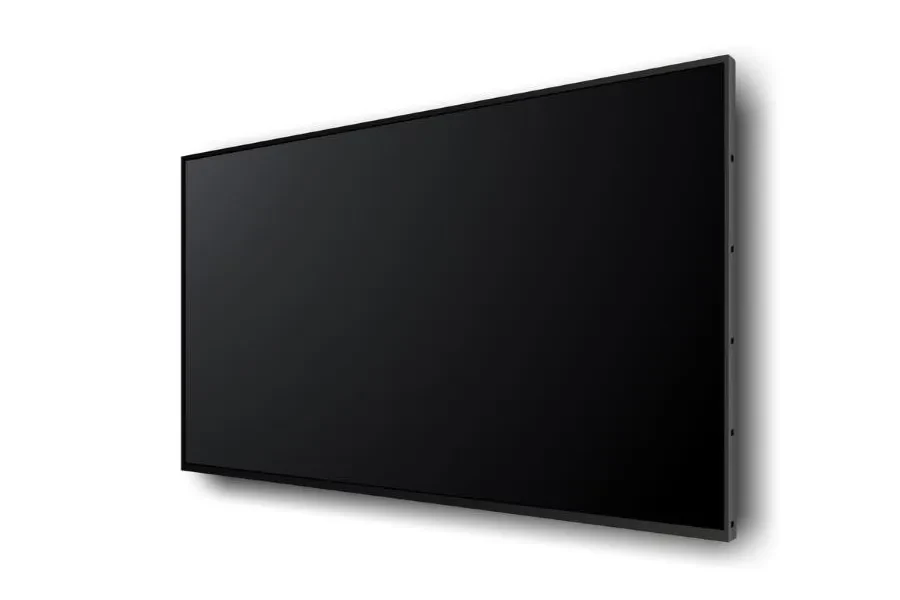
Ensuring compatibility with other devices and systems is crucial for a seamless and integrated viewing experience. Key aspects to consider include connectivity options, compatibility with smart home devices, and audio systems.
Connectivity Options
Check the TV’s connectivity options to ensure it can connect to your other devices and systems. Look for multiple HDMI ports, USB ports, and audio outputs.
HDMI 2.1 ports are ideal for gaming and high-bandwidth applications, while USB ports allow you to connect external storage devices and accessories.
Smart Home Compatibility
If you have a smart home system, ensure that the 4K TV is compatible with your virtual assistant and smart devices. Look for TVs that support Amazon Alexa, Google Assistant, and Apple HomeKit.
Smart home compatibility allows you to control the TV using voice commands and integrate it with other smart devices for a seamless and connected experience.
Audio Systems
Consider the TV’s audio capabilities and compatibility with external audio systems. Most 4K TVs come with built-in speakers, but for the best audio experience, you may want to connect an external soundbar or home theater system.
Look for TVs with HDMI ARC (Audio Return Channel) or eARC (Enhanced Audio Return Channel) support, which allows you to connect an external audio system and control it using the TV’s remote.
Conclusion
Selecting the right 4K TV involves considering various factors, including display technology, resolution, HDR support, smart features, build quality, and price. By understanding the different types of 4K TVs and evaluating their performance, design, and compatibility with other devices, you can make an informed decision and enjoy a superior viewing experience.
